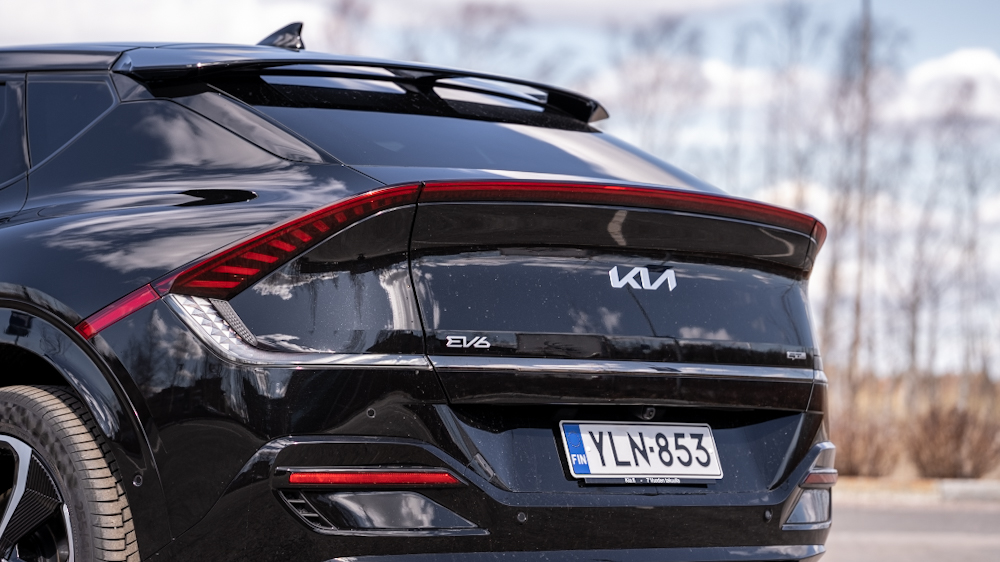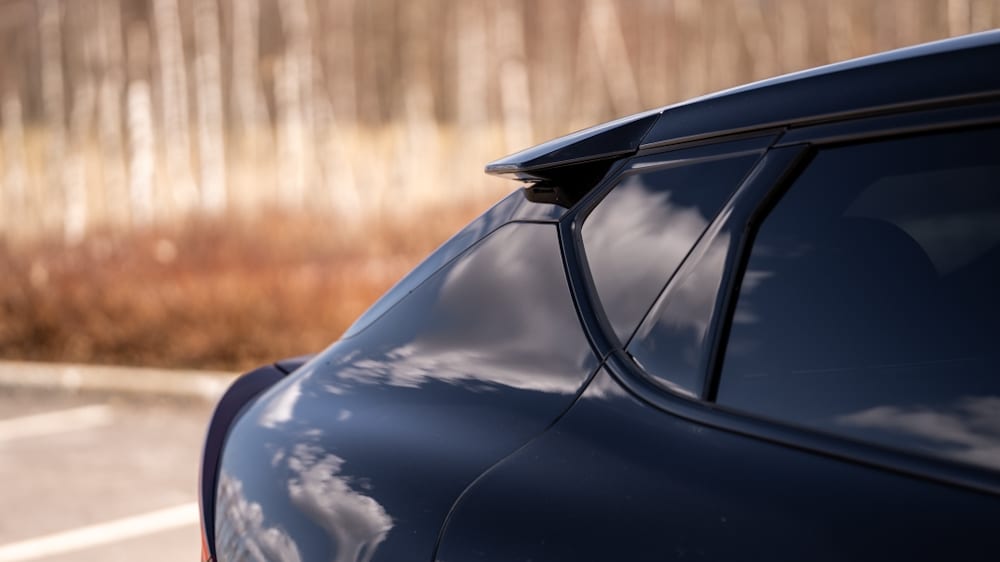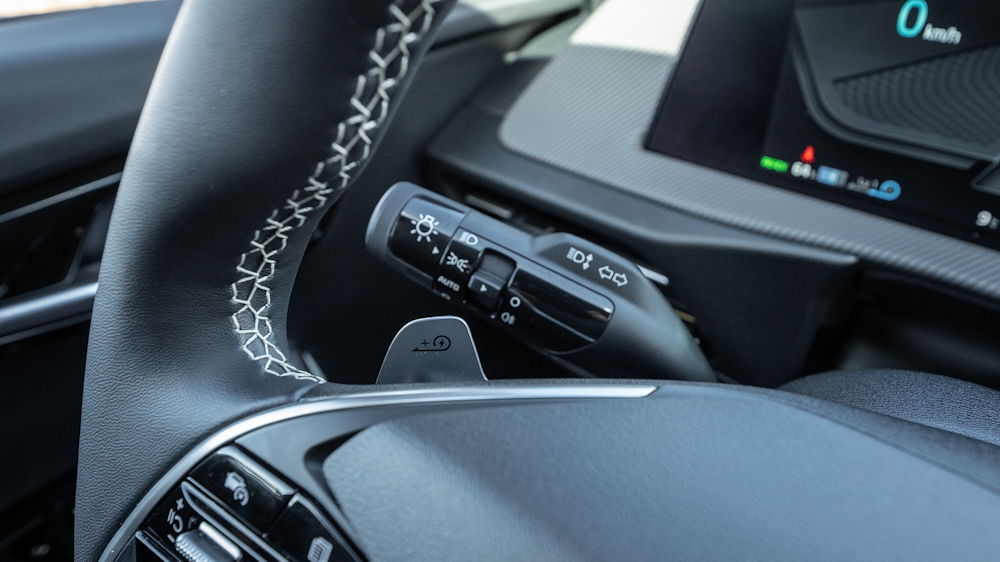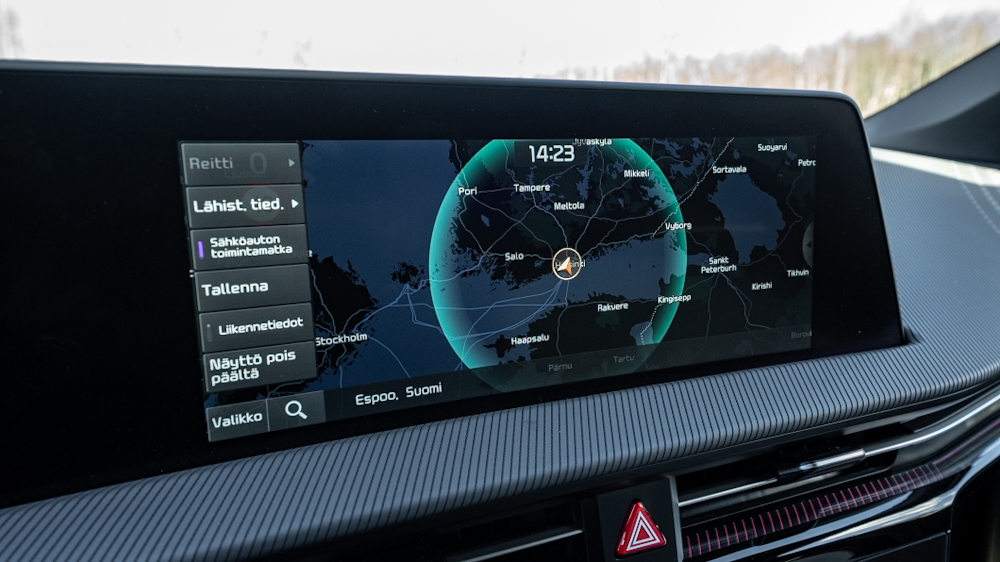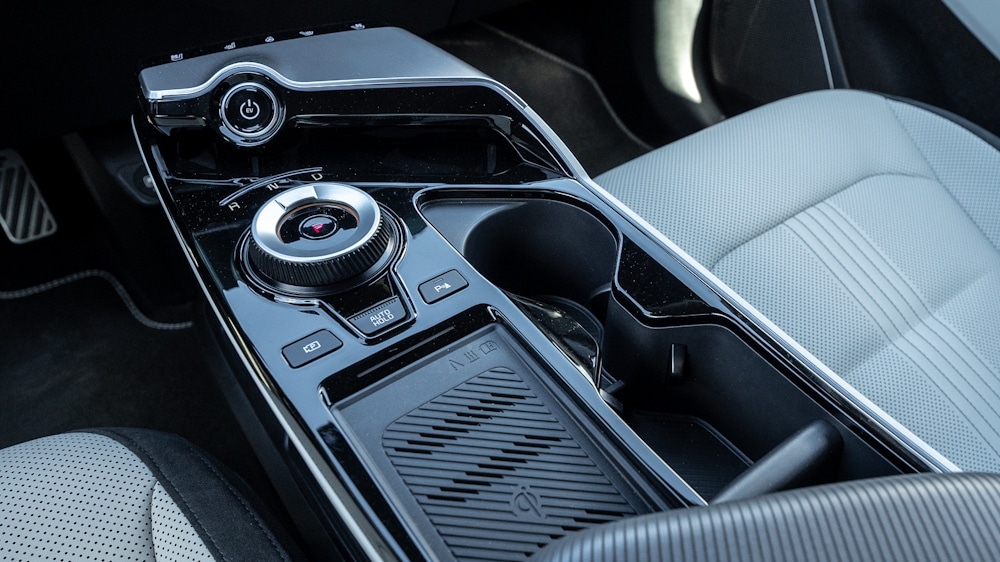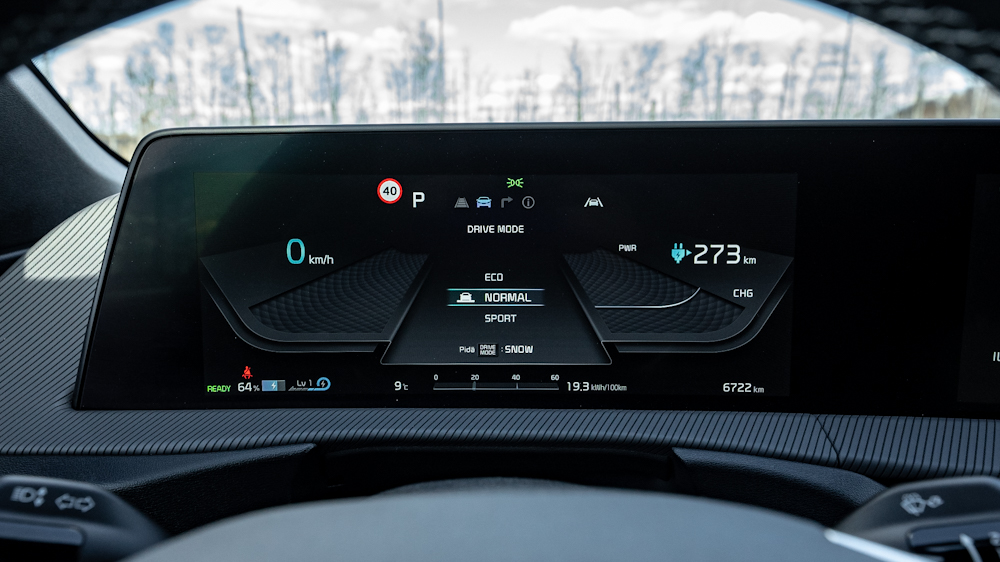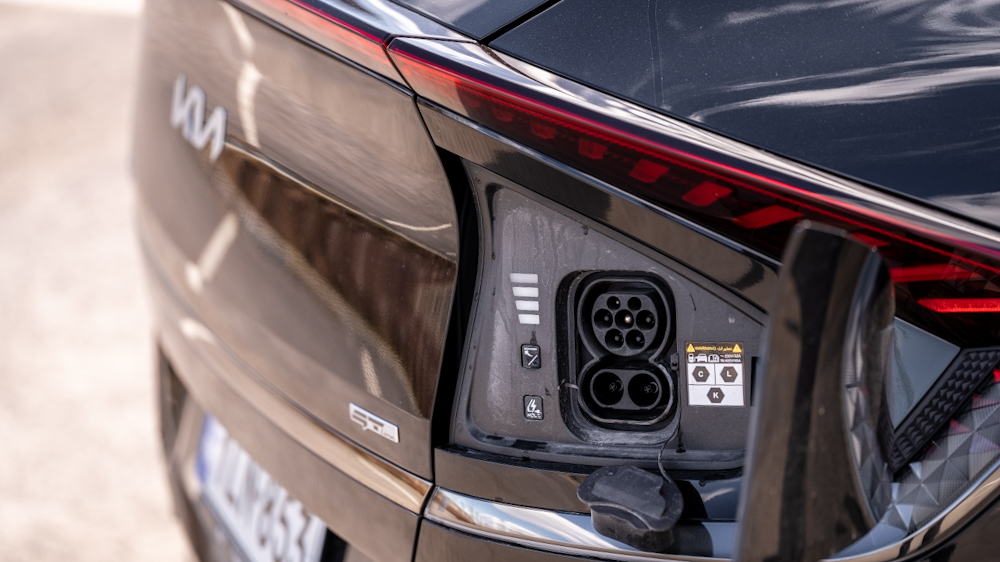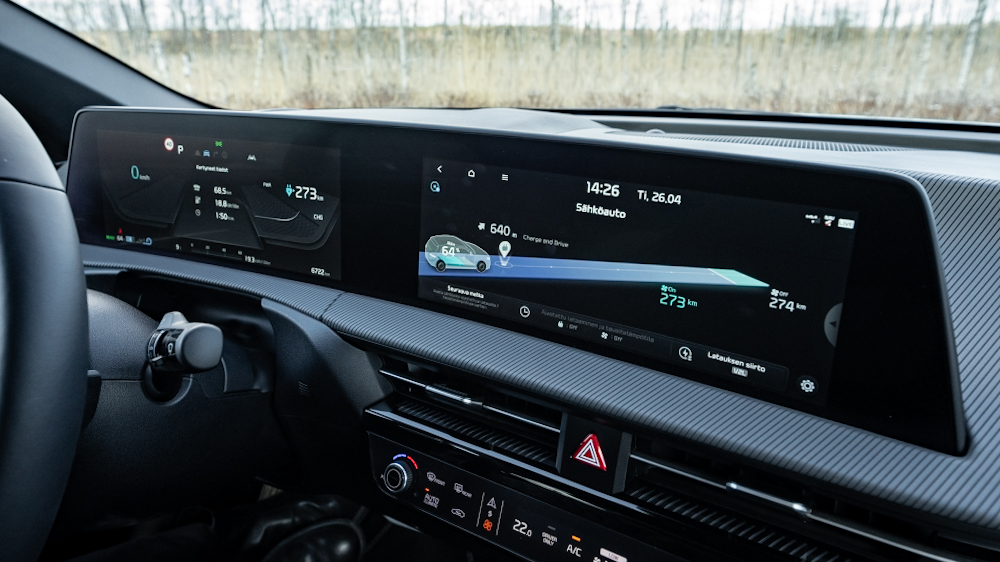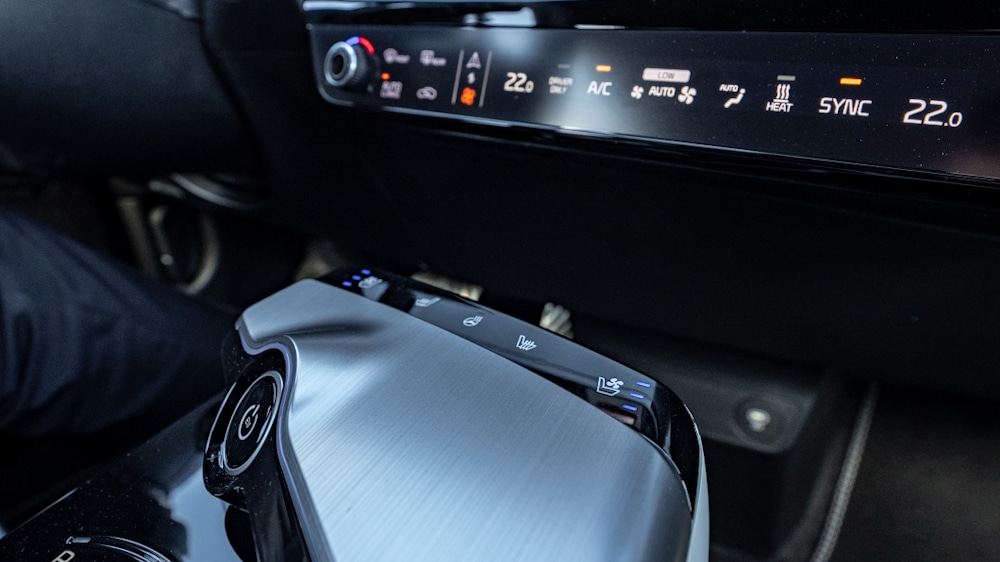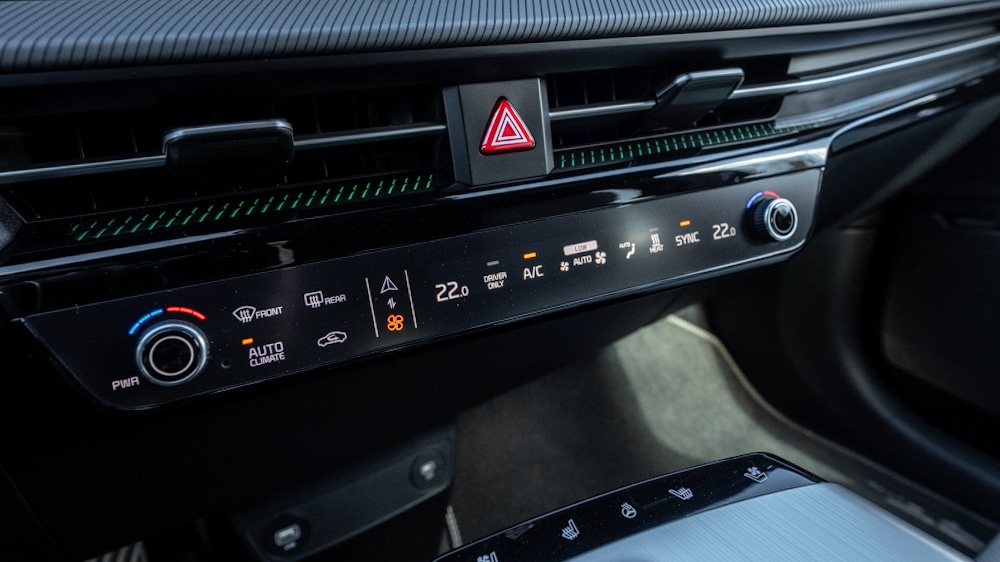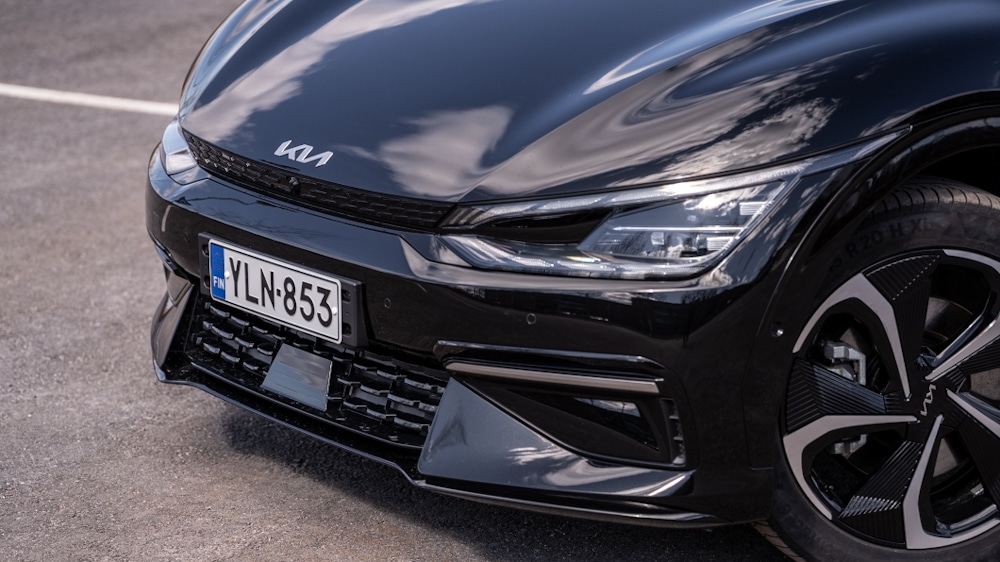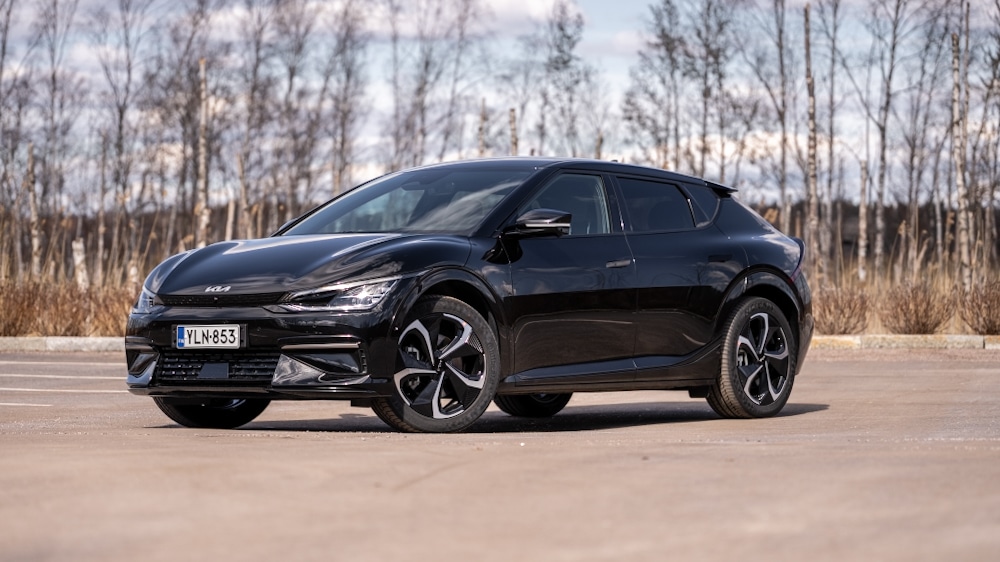It’s always easy to argue about looks, and with the Kia EV6 the design certainly divides opinion. There are shapes and details in every direction, and the car certainly doesn’t go unnoticed on the street.
Compared to the interior Hyundai Ioniq 5, the EV6 is much sportier and full of original details. At the front, the front of the car drops down quite low, as is typical of many full electric cars, reducing drag and improving pedestrian safety. At the rear, the full-width brake light and Kia’s redesigned, modern logo catch the eye.

The roofline is lowered and the windows are reduced towards the rear of the car. The long wheelbase and large 45-profile 20-inch tyres make the car look even bigger than its size.
Spirited, but mediocre handling
The Kia EV6’s handling is not immediately striking – it could well be described as mediocre. There’s a lot to like about the ride quality, but the light steering and overly snappy chassis don’t score full marks. A touch of refinement in both would make a big difference to the character of the car.
The throttle response changes considerably between driving modes. Between driving modes, in Normal mode, the throttle response is pleasing. In Eco mode, the throttle response is indeed calm, while in Sport mode, the entire power reserve, 239 kW, seems to be too far away from too small a change in pedal position.
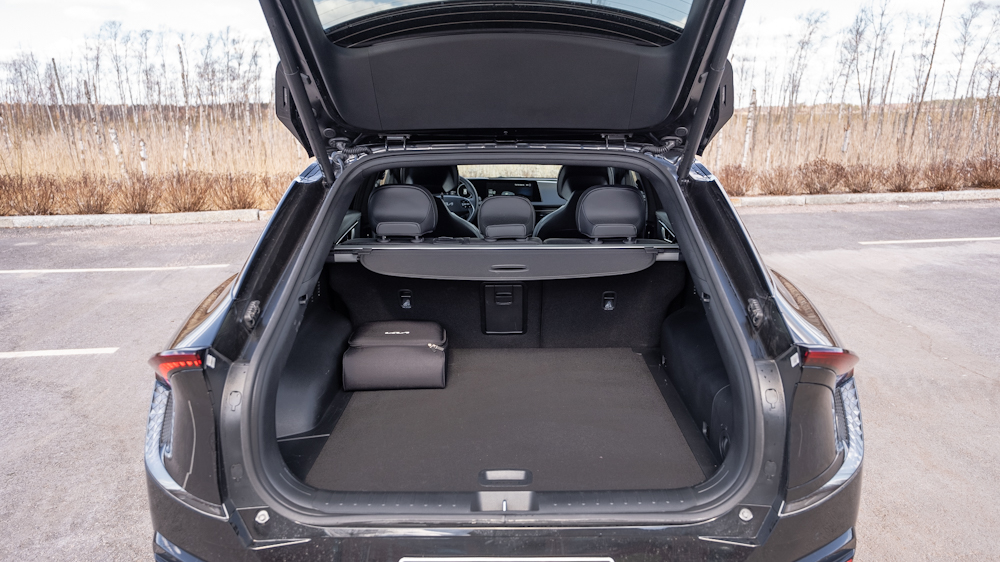
The EV6 is available in four-wheel drive and rear-wheel drive and with two different battery sizes. Depending on the traction mode, the manufacturer’s stated range is just under 400 km for the smaller 58 kWh model and just over 500 km for the larger 77 kWh battery-powered model.
The test car was the GT-line model with the larger battery and four-wheel drive. During the test drive, the average outside temperature was 10 degrees above zero and the average fuel consumption in mixed driving varied between 18 and 20 kWh/100km. On the motorway at 100 km/h, the average consumption was 19.7 kWh/100km. The average consumption tested was around 400 km on a full battery.

The level of energy recovery and deceleration of the car can be adjusted to your taste from the flaps behind the steering wheel.
In contrast to the Ioniq 5, the EV6 has a much better lane departure warning system. The EV6 keeps the car firmly between lane lines, whereas in the Ioniq 5, rowing from side to side in a lane even seemed to be a problem at times, at least on the first models.
At the top of the range is the newly launched EV6 GT. Although the name differs only slightly from the test-driven GT-Line model, the GT model itself is the fastest and most powerful model in Kia’s history, offering up to 430 kW (585 hp) of power. Zero to 60 km/h is achieved in 3.5 seconds with the GT model.
Cabin ergonomics, driving position and air-conditioned seats
Like the drivability, the cabin is thought-provoking. The EV6 has an excellent driving position. Visibility is good and the design of the cabin is very comfortable. The car’s starter button and gear selector are conveniently placed within easy reach on the centre console.
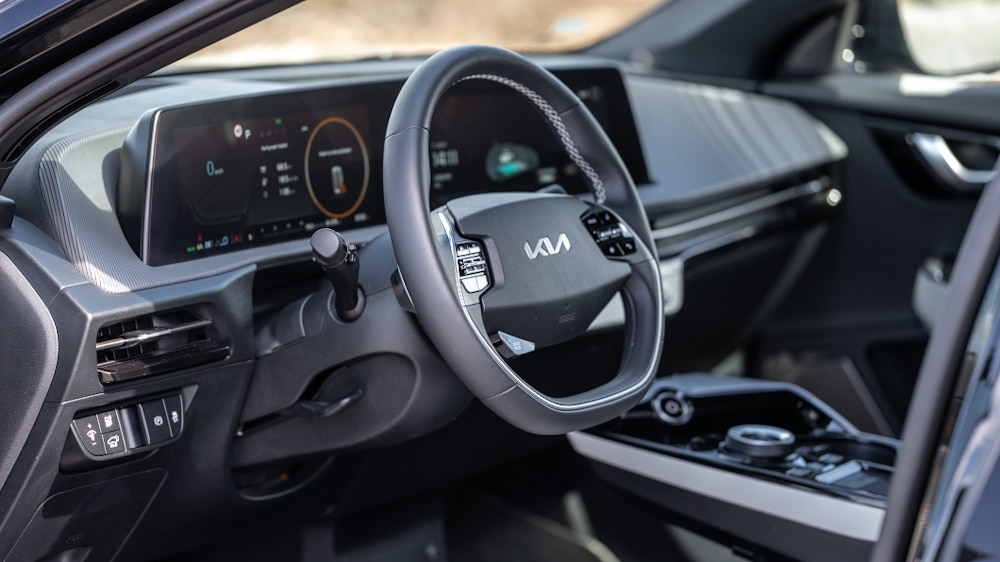
The centre console also houses the buttons for the steering wheel, seat heating and seat climate control. A wireless mobile phone charging system is located in the centre console in front of the elbow rest.
There’s plenty of storage space in the cabin. The floor is flat and open in both the front and the rear, providing plenty of space.
The cabin climate controls are located at the bottom of the dashboard, where the most essential, temperature control, is left as a rotary switch. In terms of ergonomics, the Achilles’ heel is the use of the dashboard interconnect. From a good driving position, you have to reach for the touchscreen, which should be easier to reach.

Like the front passengers, the rear passengers have access to usb-c charging points and the rear seat heaters can be switched on via a button on the door. Rear passenger legroom is good to say the least and even excellent behind the shorter driver. Sideways, the three wider rear passengers will have to make do with more cramped conditions.
In terms of boot space, the EV6 is in the middle of its size class with 490-520 litres. Of the other all-electric models, the EV6 is beaten by the Enyaq from Skoda and, by a small margin, the ID.4 and ID.5, among others. However, there are also models on the market with considerably less luggage space, such as the Mustang Mach-E, Volvo XC40 and C40.
Car of the Year 2022
In February, the Car of the Year award was presented as usual in Geneva and this year the EV6 took the prize. Full-electric cars came out on top, with the Renault Megane E-Tech and the Hyundai Ioniq 5 sister model taking the podium alongside the Kia by a very small margin.
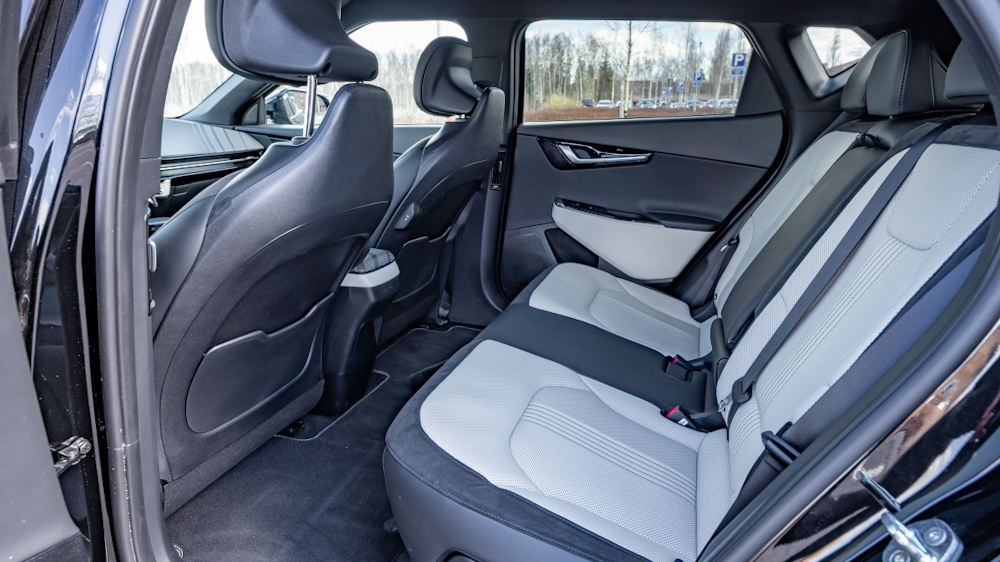
Like other all-electric cars, the Kia EV6 has not escaped inflation and price pressure. Since the spring, the car’s selling price has jumped by more than 10 percent. The rear-wheel drive EV6 with a 58 kWh battery now starts at just over €54 000, compared with just over €48 000 in the spring.
The EV6 is not the cheapest all-electric car on the market in terms of starting price, but given the very comprehensive standard equipment list and the long 7-year/150 000 km manufacturer’s warranty offered by Kia, combined with the car’s personal styling, it is very easy to fall in love with the EV6 after even a short introduction.
